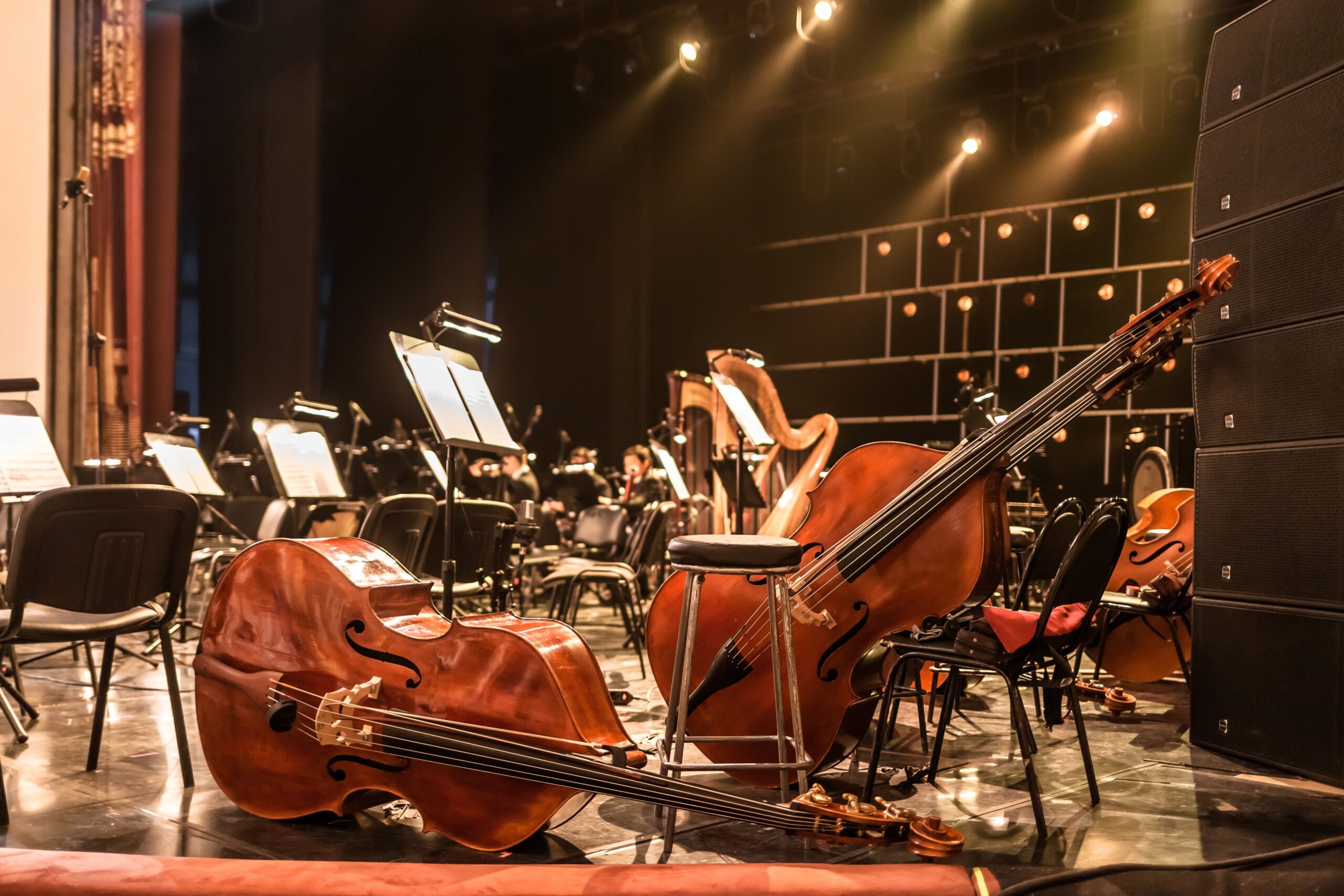July 31, 2015
What’s the Difference Between a Cello and Double Bass?


The four main instruments in the string family are the violin, viola, cello, and the double bass. When it comes to the cello and the bass, they may look similar but are actually very different. From size and tuning to the sound produced and how they’re played, we’ll go through the main differences between the two. If you’ve decided to purchase a cello or a bass and aren’t sure what your next steps should be, we’ve got you covered. Head into one of our stores or check out our cello buying guide.
Difference #1: Different Tunings
One of the main differences between the cello and the double bass is its tuning. A cello is typically tuned in 5ths from low to high (C, G, D, and A). Basses are turned in 4ths (E, A, D, and G), with the low E being lower than the cello C. Although it is possible to tune a cello in fourths and a double bass in fifths, it is almost never done. The result of this standard tuning practice is a much wider range for the cello. Cellos max out at about five octaves while the double bass maxes out around four.
Difference #2: Size – The Double Bass Is Larger
Although the cello and double bass are the largest instruments in the string family, there is a substantial difference in their size. The double bass measures in at about 6 feet long and is the largest instrument in the string family, while the cello is slightly smaller in nature. (Fun fact: the name cello is short for “violoncello”, which means “small double bass” in Italian.) While both the cello and double bass rest on the floor (supported by a metal end pin), the cello is the only instrument in the string family that must be played sitting down. The bass, on the other hand, can be played standing up or while sitting on a tall stool.
Difference #3: Sound – The Double Bass Is Deeper
The cello is known as an instrument with a tenor voice. It has a deeper and richer tone than both the violin and the viola. Due to its extra octave range, the double bass is capable of producing a deeper sound that the cello is just not capable of producing. Cellos are very popular in orchestras with between eight and twelve cellos found in large symphony orchestras. But the bass is found in almost every form of Western music making it one of the most versatile instruments available.
Difference #4: Playing Position The Bass Is Played Standing Up
The cello is played sitting down while the bass is played standing up. Here’s a little more information on how to hold a cello and a double bass:
How to Hold a Cello:
- Sit in a sturdy chair
- The neck of the cello should be to the left of the head, with the C-string tuning peg adjacent to the ear
- Avoid slouching; some cellists prefer to sit at the edge of the chair, while others prefer to sit back for more support. Regardless of your preference, make sure you’re sitting straight
- Adjust the end pin so that the body of the cello rests against your chest, balancing its lower half between your knees
- Use your knees to keep the cello steady
- Keep the cello angled to the right so that the bow can reach all the strings
How to Hold a Bass:
Although the bass can be played in a sitting or standing position, standing is the most common so it’s the one we’ll cover here. If you prefer to sit, speak with your music instructor for tips and advice.
- Stand with your feet shoulder width apart
- Adjust the endpin so the nut of the fingerboard is the same level as your eyebrows (note: different bass players have different opinions about where the nut of the fingerboard should rest, so your teacher’s preferred level may vary.)
- Turn the bass slightly to the right and tilt it back so that it rests against the left side of your hip
Now that you know the differences between the cello and the bass, we hope you’re ready to take the next step and enroll in lessons. Music & Arts is the premier private music lesson facility and we’re committed to exceptional music education. Find a store near you!







